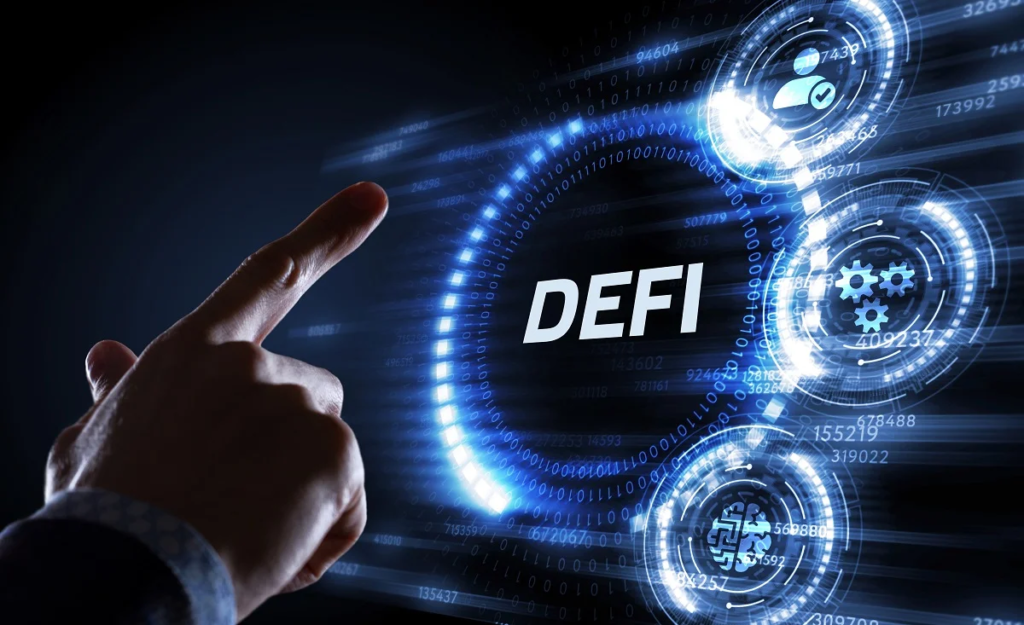Financial Trends to Watch in 2025: Decentralization, Digital Transformation, and DeFi Bridges

As we look toward 2025, the financial industry is set to undergo transformative changes fueled by digital innovation, blockchain interoperability, and the continued rise of decentralized finance (DeFi). Defiway, a leader in the DeFi space, is at the forefront of these advancements, providing users with secure, efficient tools to move assets across networks, such as the BNB to ETH bridge and ETH to BNB bridge solutions. This year promises to bring a financial landscape that emphasizes ease of use, flexibility, and transparency, appealing to both seasoned crypto users and those just stepping into the decentralized world.
With Defiway driving the development of solutions that enhance interoperability between blockchain networks, the financial world is becoming more accessible and decentralized than ever before. Tools like the BNB to ETH bridge and ETH to BNB bridge allow users to move assets seamlessly between popular blockchains, reducing friction and broadening the possibilities for crypto transactions and investments. These shifts signal not only a technological evolution but also a change in how individuals, institutions, and governments view and interact with finance.
1. The Rise of Decentralized Finance (DeFi) and Blockchain Interoperability
The decentralized finance (DeFi) sector has gained incredible momentum in recent years, and 2025 is expected to be another milestone year for the industry. By removing traditional intermediaries, DeFi platforms allow users to interact directly with financial products like loans, savings, and trading options. This empowerment of users aligns with a broader push for financial inclusivity, providing access to tools and services that were once limited to traditional banking systems.
A crucial component of this growth is the advancement of blockchain interoperability, enabling assets to move across multiple blockchain networks. The BNB to ETH bridge, for instance, plays a significant role in the DeFi ecosystem, allowing users to access the unique features of both Binance Smart Chain (BSC) and Ethereum. Similarly, the ETH to BNB bridge allows Ethereum users to expand their reach into the BSC ecosystem. Bridges like these ensure users have greater freedom and flexibility in managing assets, maximizing the potential of their investments across different platforms.
2. Institutional Adoption of DeFi and Crypto Solutions
Institutional interest in DeFi is on the rise as traditional finance begins to see the potential in decentralized finance solutions. As large institutions adopt crypto and blockchain technology, the demand for reliable, secure ways to transfer assets between blockchain networks becomes even more critical. With platforms like Defiway leading the charge, institutions can leverage secure and scalable solutions that simplify entry into the DeFi space.
This adoption is driving the creation of more robust BNB to ETH bridges, allowing for seamless asset movement between networks that institutions use. As regulations evolve to accommodate digital assets, institutional investment in DeFi will continue to grow, lending legitimacy and stability to the space and attracting more users to decentralized solutions.
3. The Influence of Artificial Intelligence on Financial Services
Artificial intelligence (AI) is reshaping finance with data-driven insights and automated processes that enhance decision-making. In 2025, the integration of AI in finance will be deeper than ever, with machine learning algorithms optimizing everything from investment strategies to fraud detection. In the context of DeFi, AI-driven analytics provide valuable insights, allowing users to make informed decisions and manage risk effectively in a volatile market.
For platforms like Defiway, AI tools can help enhance user experiences by offering personalized recommendations and identifying the most favorable times for asset transfers across bridges. AI’s predictive power can reduce the volatility associated with crypto investments, helping DeFi users maximize returns and stay ahead of market trends. The combination of DeFi and AI will allow users to access financial services that are not only efficient but also highly tailored to individual needs.
4. Security Enhancements in Decentralized Finance
As the DeFi space continues to grow, so does the need for sophisticated security measures. Blockchain’s inherent transparency is an advantage, but with increased usage comes the potential for cybersecurity threats. New developments in privacy-enhancing technologies, such as zero-knowledge proofs (ZKPs) and multi-signature protocols, are expected to become mainstream in 2025, ensuring that users’ assets and data remain protected.
Defiway and other DeFi platforms are prioritizing secure asset transfers across networks by enhancing their crypto bridge security protocols. The BNB to ETH bridge, for example, has built-in protections that safeguard user transactions while ensuring fast and efficient asset transfers. As DeFi matures, heightened security will reinforce the industry’s credibility, attracting more users who might have previously hesitated due to security concerns.
5. Blockchain Interoperability and Its Role in User Experience
Blockchain interoperability is vital to the success of DeFi, enabling users to interact with multiple blockchain ecosystems without needing separate wallets or exchanges. In 2025, we anticipate further advancements in interoperability, driven by bridges like the ETH to BNB bridge, which connects Ethereum’s robust ecosystem with the high-speed, low-fee environment of Binance Smart Chain.
Platforms like Defiway are innovating by developing seamless cross-chain solutions, allowing users to diversify their assets and investment opportunities. This interoperability provides a more streamlined experience for DeFi users, reducing the technical barriers that often discourage new participants. With improved interoperability, DeFi platforms can serve as comprehensive financial ecosystems that adapt to user preferences and needs.
6. Emergence of Central Bank Digital Currencies (CBDCs) and DeFi Integration
As central banks around the world develop their own digital currencies, or CBDCs, a new dynamic is emerging in finance. CBDCs will likely coexist with traditional fiat and crypto assets, creating a unique intersection between centralized and decentralized finance. The introduction of CBDCs could facilitate mainstream adoption of DeFi, as these digital currencies could be integrated into DeFi ecosystems through interoperable bridges.
Defiway is poised to play a significant role in this integration, as its expertise in secure crypto bridges can help users transfer assets between CBDCs and cryptocurrencies. The presence of CBDCs in the DeFi space would increase financial inclusion, allowing users to seamlessly transition between traditional and digital finance.
7. Sustainable and ESG-Centric Financial Strategies
In 2025, environmental, social, and governance (ESG) factors will continue to shape investment strategies as sustainability becomes a top priority for both consumers and corporations. Blockchain technology is well-suited to align with ESG goals due to its transparency, traceability, and ability to verify the origins and impacts of investments. DeFi solutions that integrate ESG principles will attract a growing number of investors interested in supporting environmentally and socially responsible projects.
With platforms like Defiway championing ESG-compliant investment options, users will have access to sustainable financial products within the DeFi space. Blockchain’s ability to verify ESG standards provides an added layer of accountability, fostering trust in sustainable DeFi solutions.
8. The Evolution of Digital Wallets in Decentralized Finance
Digital wallets have become essential tools for managing digital assets, but in 2025, they are expected to evolve beyond simple storage solutions. Digital wallets will serve as gateways to a wide range of DeFi services, offering users access to lending, staking, and trading from a single interface. With integrated crypto bridges like the BNB to ETH bridge, digital wallets can facilitate cross-chain transactions without requiring users to switch between platforms.
Defiway’s approach to digital wallets emphasizes accessibility and ease of use, with features that allow users to manage assets across multiple blockchains seamlessly. This integration encourages widespread adoption of DeFi by simplifying the user experience, making it easier for both beginners and experienced users to participate in the decentralized economy.
A Future Defined by Decentralization and Interoperability
The financial landscape of 2025 is shaped by technological advancements, user-centric solutions, and a shift toward decentralized finance. With Defiway at the forefront of interoperability, security, and sustainability, users are gaining greater control over their financial transactions and investments. Through innovations like the BNB to ETH bridge and ETH to BNB bridge, the DeFi ecosystem is becoming more accessible and flexible, catering to a diverse global audience.
In this new financial era, staying informed and adaptable will be essential. The trends shaping 2025 highlight a future where finance is more transparent, decentralized, and tailored to the needs of individuals. With the momentum of DeFi and blockchain interoperability, the financial world is moving toward a more inclusive and resilient future, empowering users to take control of their assets in ways never before possible.
Alexia is the author at Research Snipers covering all technology news including Google, Apple, Android, Xiaomi, Huawei, Samsung News, and More.











